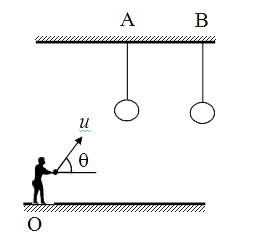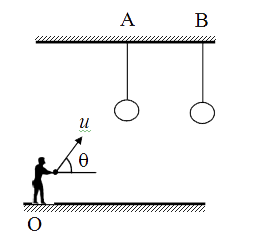A baby boy aged two years is admitted to play school and passes through a dental check-up. The dentist observed that the boy had twenty teeth. Which teeth were absent?
Canines
Pre-molars
Molars
Incisors
The correct Answer is:B
To determine which teeth are absent in a two-year-old baby boy who has 20 teeth, we can follow these steps:
Step 1: Understand the Dental Formula
- The dental formula for adults is 2-1-2-3 (upper jaw) and 2-1-2-3 (lower jaw), which totals to 32 teeth.
- The dental formula for children (deciduous teeth) is 2-1-0-2 (upper jaw) and 2-1-0-2 (lower jaw), which totals to 20 teeth.
Step 2: Identify Types of Teeth
- In the dental formula for children:
- Incisors: 8 (2 in upper jaw + 2 in lower jaw)
- Canines: 4 (1 in upper jaw + 1 in lower jaw)
- Premolars: 0 (none present in children)
- Molars: 8 (2 in upper jaw + 2 in lower jaw)
Step 3: Analyze the Given Information
- The boy has 20 teeth, which aligns with the expected number of teeth for a child.
- According to the dental formula for children, premolars are absent in this age group.
Step 4: Conclusion
- Since the boy has 20 teeth, and the only type of teeth that are not present in children are the premolars, we conclude that the absent teeth in the baby boy are the premolars.
Final Answer
The absent teeth in the baby boy are the premolars.
---
- The dental formula for adults is 2-1-2-3 (upper jaw) and 2-1-2-3 (lower jaw), which totals to 32 teeth.
- The dental formula for children (deciduous teeth) is 2-1-0-2 (upper jaw) and 2-1-0-2 (lower jaw), which totals to 20 teeth.
- In the dental formula for children:
- Incisors: 8 (2 in upper jaw + 2 in lower jaw)
- Canines: 4 (1 in upper jaw + 1 in lower jaw)
- Premolars: 0 (none present in children)
- Molars: 8 (2 in upper jaw + 2 in lower jaw)
- The boy has 20 teeth, which aligns with the expected number of teeth for a child.
- According to the dental formula for children, premolars are absent in this age group.
- Since the boy has 20 teeth, and the only type of teeth that are not present in children are the premolars, we conclude that the absent teeth in the baby boy are the premolars.
The absent teeth in the baby boy are the premolars.
Similar Questions
In the following items, each passage consists of six sentences. The first and the sixth sentence are given in the beginning as S1 and 56. The middle four sentences in each have been removed and jumbled up. These are labelled P, Q, R and S. You are required to find out the proper sequence of the four sentences and mark your response accordingly on the Answer Sheet.
S1: Iguanodon was one of the first dinosaurs to be scientifically described.
S6: This quadrupedal dinosaur lived about 70 million years ago and its fossils are found in many parts of England, Europe, Asia and North Africa.
P: These teeth formed a dental battery in which replacing teeth were constantly growing.
Q: The fore limbs were slightly larger than other members of its group known as Ornithischia.
R: It had numerous teeth in the sides of the jaws, arranged in rows.
S: It was about 40 feet in length.
The proper sequence should beView SolutionVikash went to vegetable market with his elder sister, a M.Sc Botany student. There he saw many varieties of different vegetables such as different kinds of chilies (short, long, round, pungent, less pungent, green reddish, orange), several varieties of potato and tomatoes. He asked his sister the following questions.
(i) What is the need of producing so many varieties of different crop plants.
(ii) What is the name of branch of science which deals with crop improvement ?
(iii) What are the methods used by plant breeders ?
(iv) What is hybridization ?View Solution
Knowledge Check
- Question 1 - Select One
The Primary denition in human differ from permanent denition is not having one of the folloiwn type of teeth
or
A baby boy aged two years years is admitted to play school and passes through a dental observed that boy that had twenty teeth. Which teeth were absent absentAPremolarsBMolarsCIncisorsDCannie - Question 2 - Select One
Two rings are suspended from the points A and B on the ceiling of a room with the help of strings of length 1.2 m each as shown. The points A and B are separated from each other by a distance AB = 1.2 m. A boy standing on the floor throws a small ball so that it passes through the two rings whose diameter is slightly greater than the ball. At the moment when the boy throws the ball, his hand is at a height of 1.0 m above the floor. A stop watch which is switched on at the moment of throwing the ball reads 0.2 s when the ball passes through the first ring and 0.6 s when it passes through the second ring.

The projection speed of the ball is:A3 m/sB4 m/sC5 m/sD2.5 m/s - Question 3 - Select One
Two rings are suspended from the points A and B on the ceiling of a room with the help of strings of length 1.2 m each as shown. The points A and B are separated from each other by a distance AB = 1.2 m. A boy standing on the floor throws a small ball so that it passes through the two rings whose diameter is slightly greater than the ball. At the moment when the boy throws the ball, his hand is at a height of 1.0 m above the floor. A stop watch which is switched on at the moment of throwing the ball reads 0.2 s when the ball passes through the first ring and 0.6 s when it passes through the second ring.

When the ball lands on the floor, the stop watch reads:A1.2 sB0.8 sC1.5 sD1 s
Two rings are suspended from the points A and B on the ceiling of a room with the help of strings of length 1.2 m each as shown. The points A and B are separated from each other by a distance AB = 1.2 m. A boy standing on the floor throws a small ball so that it passes through the two rings whose diameter is slightly greater than the ball. At the moment when the boy throws the ball, his hand is at a height of 1.0 m above the floor. A stop watch which is switched on at the moment of throwing the ball reads 0.2 s when the ball passes through the first ring and 0.6 s when it passes through the second ring.

The angle of projection of the ball is:View SolutionTwo rings are suspended from the points A and B on the ceiling of a room with the help of strings of length 1.2 m each as shown. The points A and B are separated from each other by a distance AB = 1.2 m. A boy standing on the floor throws a small ball so that it passes through the two rings whose diameter is slightly greater than the ball. At the moment when the boy throws the ball, his hand is at a height of 1.0 m above the floor. A stop watch which is switched on at the moment of throwing the ball reads 0.2 s when the ball passes through the first ring and 0.6 s when it passes through the second ring.

The maximum height attained by the ball above the floor is:View SolutionTwo rings are suspended from the points A and B on the ceiling of a room with the help of strings of length 1.2 m each as shown. The points A and B are separated from each other by a distance AB = 1.2 m. A boy standing on the floor throws a small ball so that it passes through the two rings whose diameter is slightly greater than the ball. At the moment when the boy throws the ball, his hand is at a height of 1.0 m above the floor. A stop watch which is switched on at the moment of throwing the ball reads 0.2 s when the ball passes through the first ring and 0.6 s when it passes through the second ring.

The ball lands on the floor at a distance:View SolutionTwo boys are playing on a ground. Both the boys are less than 10 years old. Age of the younger boy is equal to the cube root of the product of the age of the two boys. If we place the digit representing the age of the younger boy to the left of the digit representing the age of the elder boy, we get the age of father of the younger boy. Similarly, if we place the digit representing the age of the elder boy to the left of the digit representing the age of the younger boy and divided the figure by 2, we get the age of mother of the younger boy. The mother of the younger boy is younger to his father, by 3 years. Then what is the age of the younger boy ?
View SolutionTwo boys are playing on a ground. Both the boys are less than 10 years old. Age of the younger boy is equal to the cube root of the product of the age of the two boys. If we place the digit representing the age of the younger boy to the left of the digit representing the age of the elder boy, we get the age of father of the younger boy. Similarly, if we place the digit representing the age of the elder boy to the left of the digit representing the age of the younger boy and divided the figure by 2, we get the age of mother of the younger boy. The mother of the younger boy is younger to his father, by 3 years. Then, what is the age of the younger boy
View Solution

